FAU Engineers Win NSF Grant for Unique School of AI Bio-Robotic Fish
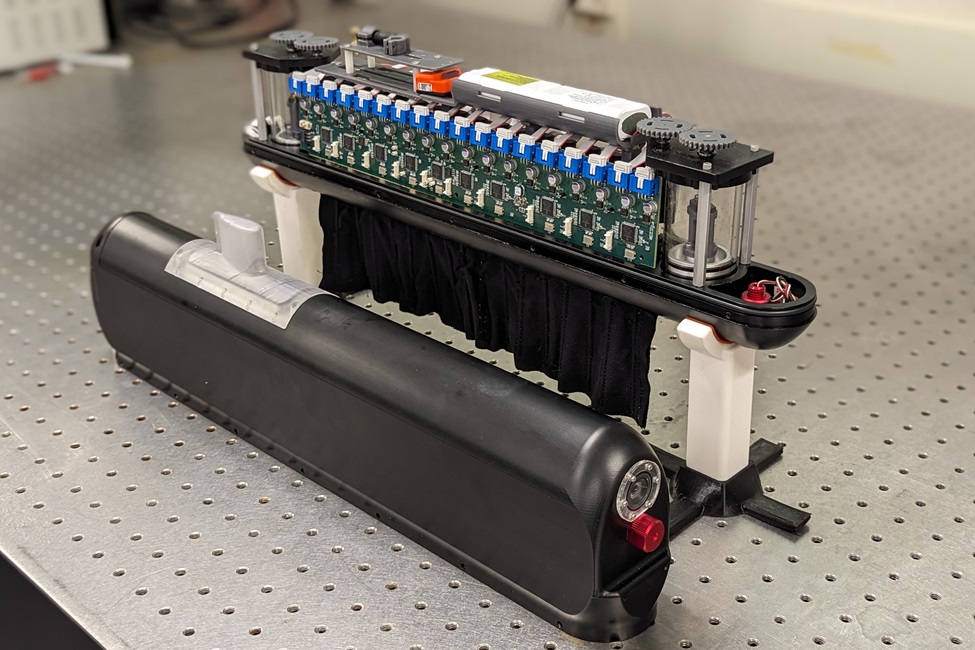
Researchers will combine the undulating propulsion of the robotic school of fish with state-of-the-art software-programmable multi-function underwater wireless sensing and communications.
Exploring and understanding sensitive ocean and coastal environments such as sea grass, mangrove forests, kelp forests, coral reefs, and the arctic ocean requires in situ observations that are currently difficult or nearly impossible and costly to pursue. Swarms of underwater drones can quickly and efficiently sample large areas by coordinating in real-time and avoiding duplication of the effort.
When someone says “drone swarm” most people think, “I’ve seen those at sporting events.” A pre-programmed light show, such as the ones seen at major events or festivals, relies on exact, pre-defined movements that are executed in sequence. The devices themselves have no awareness of each other as part of a broader picture, so the system as a whole is not set up to adapt in real-time. True drone swarming is all about collaboration. It represents the next level of autonomy: multiple devices sharing responsibility for a common mission and adjusting to changing circumstances creatively.
Contrary to land and air, underwater robotic systems have not yet been able to achieve similar levels of self-organization. Most underwater swarms coordinate only at the surface or have no coordination whatsoever. A system of intelligent interconnected underwater vessels capable of navigating in complex underwater environments is still lacking. Taking inspiration from nature, where schools of fish move fluidly without a single leader, groups of swimming robots would be capable of exploiting hydrodynamic interactions with their peers and the water environment to minimize energy consumption and enhance maneuvering.
To tackle these challenges, researchers from Florida Atlantic University’s College of Engineering and Computer Science have secured an $818,396 grant from the National Science Foundation (NSF) for a project titled, “Development of a School of Robotic Fish for Research and Training on AI Biomimetics and Multi-modal Communications.” The project is an effort by researchers from the Center for Connected Autonomy and AI (CA-AI) and the SeaTech Institute at FAU.
For the project, researchers will create a multi-agent system initially made up of three underwater vessels. These vessels will be equipped with advanced communication systems that use both light and sound to communicate underwater, along with a buoy that acts as a command sea surface center and Internet gateway, capable of both gathering data and remotely communicating with the underwater robots. This research initiative delves into three areas: bio-inspired propulsion that mimics how schools of fish move, artificial intelligence (AI) to improve underwater mobility, and new underwater wireless networking strategies designed specifically for underwater mobile settings.
“This important NSF grant will help our investigators develop a system that represents a significant step forward in providing engineers, researchers, and ocean scientists focused on robotics, wireless communications, and signal processing with the tools they need,” said Stella Batalama, Ph.D., dean, FAU College of Engineering and Computer Science. “Researchers will be able to conduct experiments on how underwater vehicles interact with each other and the underwater environment, test new wireless communication systems for underwater networking and positioning, and develop shared software and hardware resources. Ultimately, this initiative will strengthen partnerships and promote collaboration among researchers in the underwater networking and robotics communities, helping to bridge the gaps between these fields.”
The research and supporting equipment at the interface of these technologies will enable the development of collaborative systems capable to navigate through sensitive ocean environments that are difficult or impossible to explore with current unmanned systems or tethered sensors.
“One of the key motivations for developing a school of bio-inspired fish is to survey sensitive littoral areas, such as coral reefs, which are crucial for the health of both ocean ecosystems and coastal communities,” said Oscar Curet, Ph.D., principal investigator and an associate professor in the FAU Department of Ocean and Mechanical Engineering. “Our overarching goal is to integrate ocean robotics and networking technology with environmental enhancement and community collaboration to monitor and protect coastal habitats. This includes rapidly detecting and documenting hazardous conditions like elevated acidification and temperature fluctuations, as well as tracking changes in ecological diversity, coral health, and coastal erosion.”
Progress in this research area will allow scientists to explore more complex and remote aquatic environments that until now has been unsafe, impractical, or not feasible at all for divers or other engineered systems to visit.
“Combining the undulating propulsion of the robotic school of fish with state-of-the-art software-programmable multi-function underwater wireless sensing and communications will create a unique multi-purpose swimming sensor network able to perform coordinated station-keeping and directional maneuvers, which are difficult or in some cases impossible to perform with currently available underwater vehicles,” said Dimitris Pados, Ph.D., co-PI, professor, Schmidt Eminent Scholar in Engineering, director of the CA-AI and fellow of FAU I-SENSE in the Department of Electrical Engineering and Computer Science. “Importantly, this school of bio-robotic fish will significantly reduce the time and cost for underwater sensing missions, both in shallow coastal areas and in deep ocean environments.”
The project will include a trio of quickly deployable bio-inspired robotic fish that utilizes undulating fin propulsion and features integrated multi-modal acoustic/optical underwater communication and positioning systems; a programmable research platform that can establish mobile underwater wireless networks and evaluate AI/machine learning applications for underwater mobility; and a surface buoy capable of collecting and sharing information with remote operators in real-time.
“This stable, shared-use, reprogrammable research instrument will enhance research and training in bio-robotic propulsion, underwater multi-modal communications, networking, and positioning,” said George Sklivanitis, Ph.D., co-PI, Schmidt Research Associate Professor and a fellow of FAU I-SENSE, FAU Department of Electrical Engineering and Computer Science. “It also will facilitate monitoring challenging ocean environments as well as areas near ocean structures where existing underwater vehicles struggle to operate or where tethered sensors cannot be installed or maintained.”
The project also will provide a unique research and training instrument for undergraduate and graduate students at FAU with the potential to train the next generation of ocean, electrical and computer engineering professionals and AI engineers and scientists with unique theoretical and system design skills in ocean IoT, robotics, connected autonomy and AI.
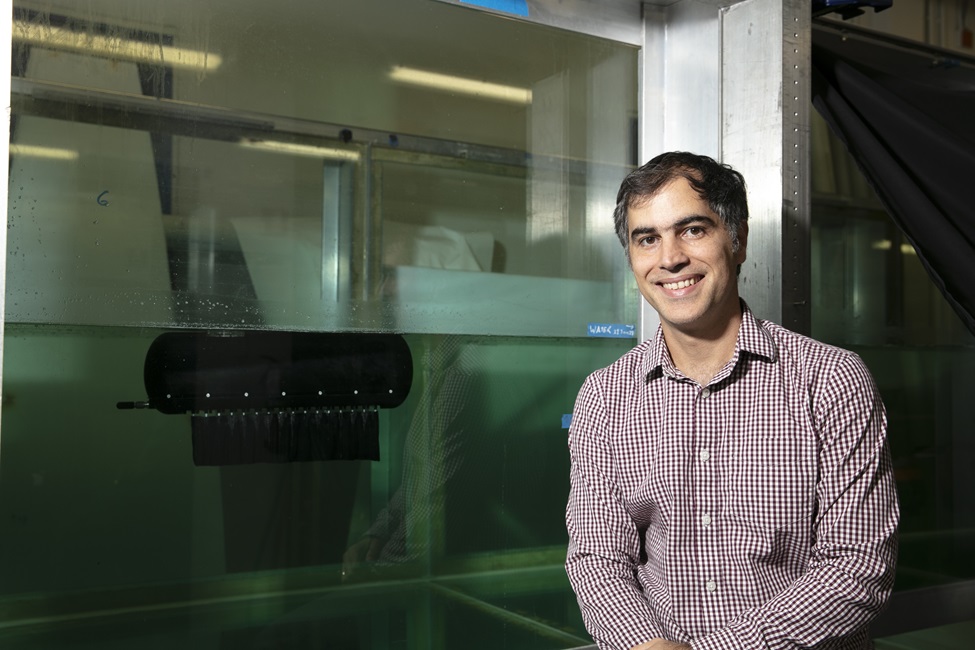
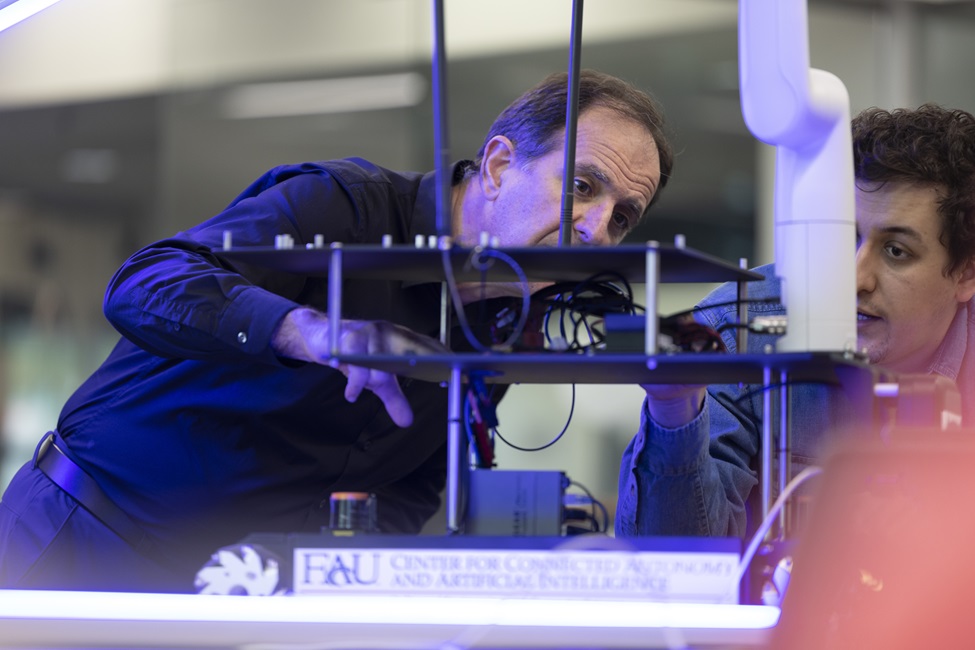
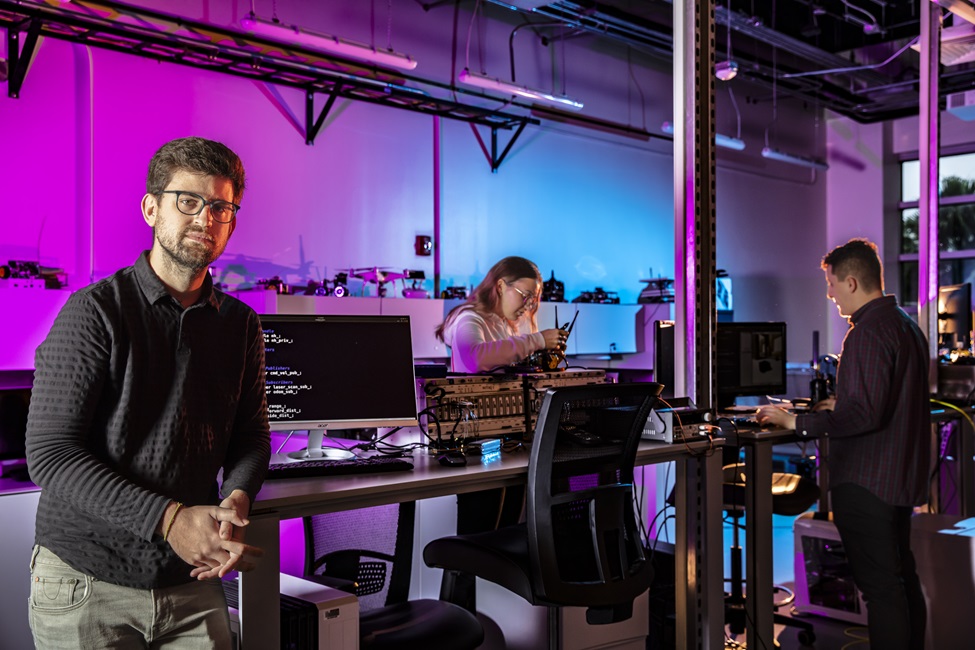
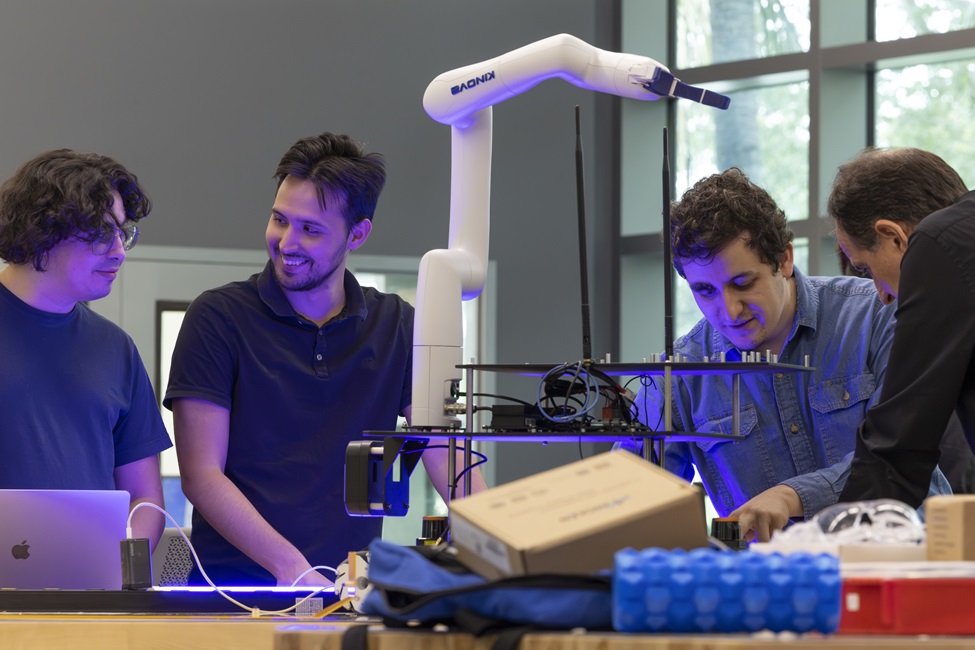
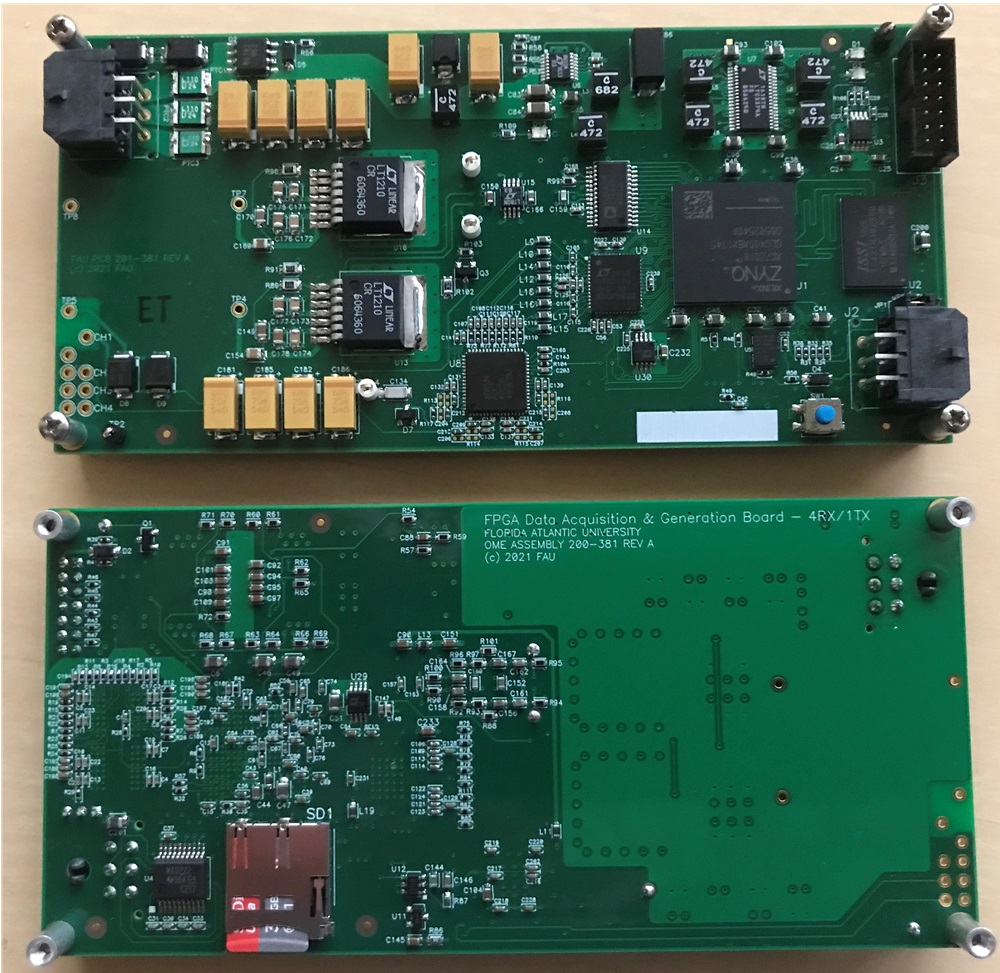
-FAU-
Tags: technology | faculty and staff | engineering | research | AI